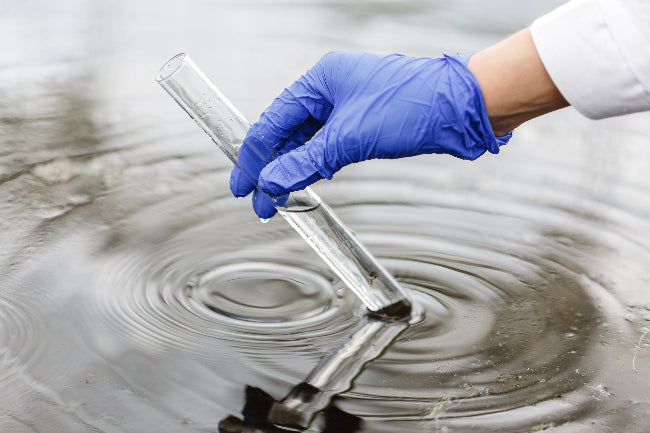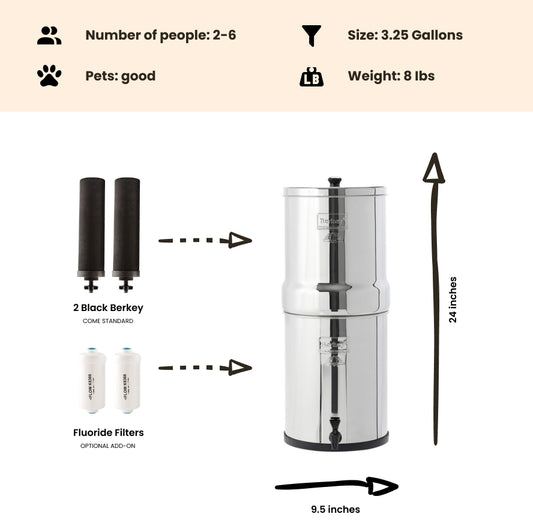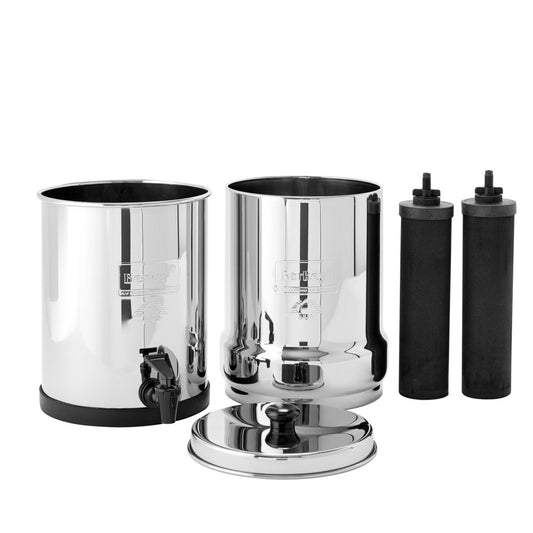
Common Drinking Water Contaminants Responsible for Water Contamination in the U.S.
By Dan DeBaunShare
Water is essential to our health and well-being. It's comes as not surprise, then, that the quality of the water we ingest is extremely important. Unfortunately, drinking water sources, and even treated tap water, can contain a wide range of pollutants that can be harmful to our health.
Being well-informed about water contaminants and pollutants is the first and necessary step to reduce their ill effects on your and your family's health. So let's get to know our enemy.
Let's learn about:
- Common Drinking Water Contaminants
- Contaminants of Emerging Concern
- Is Treated Water Contaminant-Free?
- How to Remove Harmful Drinking Water Contaminants
Common Drinking Water Contaminants that Pose a Health Risk to Human Health
Here's a list of some common drinking water pollutants that can be found in drinking water sources:
Chlorine and Chloramine
Chlorine and chloramine are disinfectants that are added to water to kill microorganisms to protect us from disease. However, they can react with organic matter to form harmful byproducts like trihalomethanes (THMs) and haloacetic acids (HAAs).
Studies have linked exposure to elevated levels of THMs in drinking water to various health risks (citations at the end of the article). Long-term consumption of water containing high levels of THMs has been associated with an increased risk of certain cancers, including bladder cancer, as well as reproductive and developmental effects.
Fluoride
Fluoride is often added to drinking water during treatment as it is toted to be beneficial in controlled amounts for dental health. However, excessive fluoride levels can cause health issues such as dental fluorosis and skeletal fluorosis.
Heavy Metals
Contaminants such as lead, arsenic, mercury, and cadmium can leach into water from natural deposits or industrial activities. These metals can have serious health effects, particularly on children and pregnant women.
Nitrates and Nitrites
These pollutants can originate from agricultural runoff or septic systems. The Berkey will remove nitrites but not nitrates.
Pesticides and Herbicides
Residues from agricultural practices can enter surface water sources through runoff or leach through soils to contaminate groundwater. Pesticides in drinking water can pose health risks depending on the type of pesticide, its concentration, and the duration of exposure.
Exposure to pesticides in drinking water can cause acute health effects such as stomach upsets, vomiting, or diarrhea, as well as chronic health effects such as disruption to the endocrine system, resulting in reproductive and developmental effects, while long-term exposure to some pesticides has been linked to an increased risk of cancer.
Volatile Organic Compounds (VOCs)
Volatile Organic Compounds (VOCs) are a group of chemical contaminants that can evaporate into the air at room temperature and are known to pose health risks when present in drinking water. VOCs can enter drinking water through various sources, including industrial discharges, chemical spills, and contaminated groundwater.
Some common VOCs found in drinking water include chemicals such as atrazine, benzene, chloroform, methylene chloride, Tetrachloroethylene (PCE), Trichloroethylene (TCE), toluene, vinyl chloride and xylene.
Industrial Chemicals
Pollutants such as Per- and Polyfluoroalkyl Substances (PFAS), PCBs (polychlorinated biphenyls), dioxins, and other synthetic chemicals that originate from industrial processes, manufacturing activities, and industrial waste disposal practices can enter water sources and potentially contaminate drinking water, posing health risks to humans and the environment.
Radioactive Substances
Naturally occurring radionuclides like radium and uranium can contaminate groundwater sources.
Contaminants of Emerging Concern
While the contaminants above are the most common in the sources of drinking water, we should also pay attention to some contaminants that are, at this time, maybe less prevalent, the threat from them is growing rapidly.
Pharmaceuticals
Residues of prescription drugs, over-the-counter medications, and veterinary medicines, such as antibiotics, hormones, painkillers, and other drugs can be found in water due to human excretion or improper disposal and insufficient removal during wastewater treatment processes.
The presence of pharmaceuticals in drinking water has raised concerns about potential health impacts, although the extent and significance of these risks are largely still unknown.
Plastics and Microplastics
Microplastic contamination in drinking water is a growing environmental and public health concern. Microplastics are tiny plastic particles (less than 5 millimeters in size) that originate from the breakdown of larger plastic debris, synthetic fibers from textiles, and microbeads used in personal care products.
These microplastics can enter water sources through various pathways and can potentially contaminate drinking water supplies, posing a risk to human health.
Is Treated Water Contaminant-Free?
The above drinking water contaminants can have varying health impacts depending on their concentration and exposure duration. To prevent exposure to these contaminants and their potential risk to public health, drinking water is treated to meet stringent drinking water safety standards and must undergo regular water testing to ensure it meets these safety standards.
However, it's important to note that water treatment processes do not always remove all contaminants, and water can also become contaminated after it leaves the water treatment plant.
How to Remove Harmful Drinking Water Contaminants
To be safe, it is advisable to filter your drinking water with a high-quality water filter such as a Berkey water filtration system to remove any harmful contaminants that may still be present. A Berkey home water filter fitted with Black Berkey filter elements is capable of removing over 200 common drinking water contaminants, including those listed above, giving you the peace of mind that you always have a safe supply of drinking water on hand.
Contaminants in Drinking Water: Frequently Asked Questions
What are the most common water contaminants?
Common water contaminants include naturally occurring substances such as microorganisms, algal toxins, arsenic, lead, mercury, radium, and uranium.
What are common water pollutants?
Some common pollutants introduced to water sources through human activities include inorganic chemicals (such as chromium, fluoride, heavy metals, and nitrate and nitrite), organic chemicals (such as pesticides, herbicides, industrial chemicals, VOCs), pharmaceuticals, residual disinfectants (chlorine and chloramine) and disinfection byproducts (Trihalomethanes (THMs) and Haloacetic acids (HAAs).
How common is water contamination and pollution?
Almost all natural water sources contain either naturally occurring contaminants or pollutants originating from human activities, or both.
Sources:
-
Regular price $234.00 USDRegular priceUnit price / per
-
Regular price $327.00 USDRegular priceUnit price / per
-
Regular price From $367.00 USDRegular priceUnit price / per
-
Regular price From $408.00 USDRegular priceUnit price / per
-
Regular price From $451.00 USDRegular priceUnit price / per
-
Regular price From $478.00 USDRegular priceUnit price / per
-
Regular price $332.50 USDRegular priceUnit price / per
$350.00 USDSale price $332.50 USDSale

Dan DeBaun
Dan DeBaun is the owner and operator of Big Berkey Water Filters. Prior to Berkey, Dan was an asset manager for a major telecommunications company. He graduated from Rutgers with an undergraduate degree in industrial engineering, followed by an MBA in finance from Rutgers as well. Dan enjoys biohacking, exercising, meditation, beach life, and spending time with family and friends.
~ The Owner of Big Berkey Water Filters















